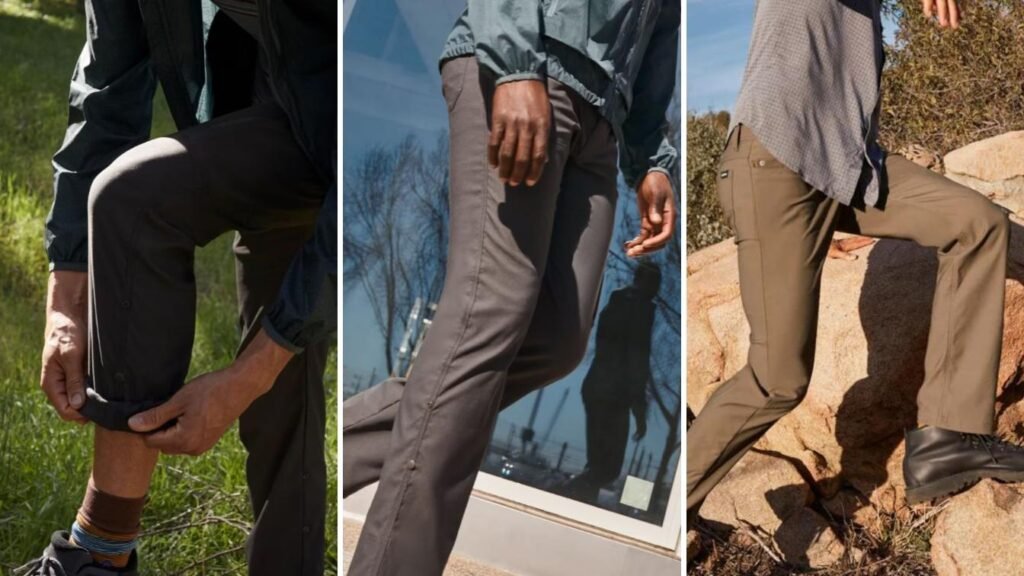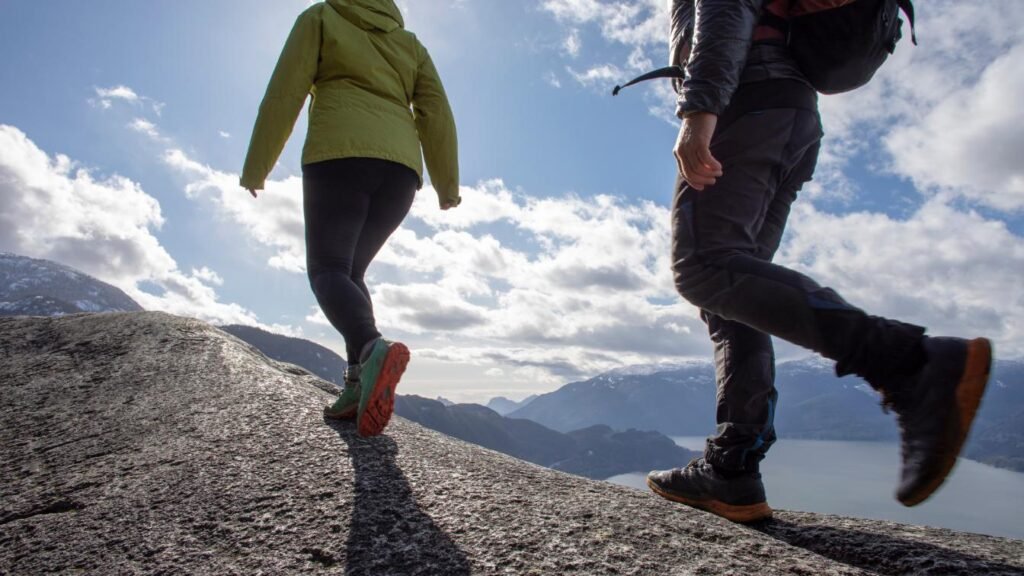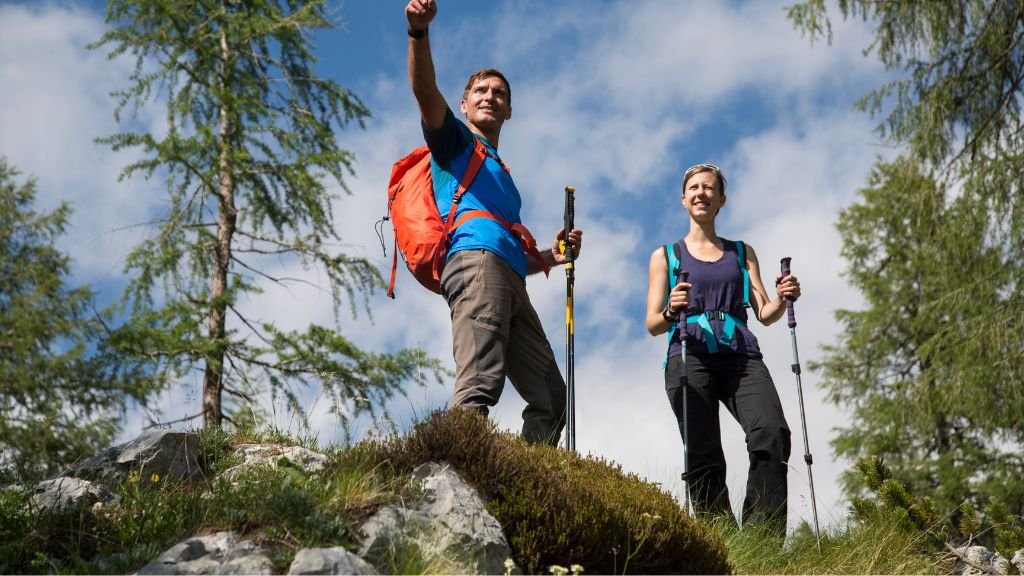What lies beneath your hiking pants is crucial for comfort and protection. You may not think much about the undergarments you pull on before a hike, yet they play a pivotal role in keeping you chafe-free and dry throughout your journey.
Get ready to uncover the secrets of proper layering down under – because sometimes, the smallest details have the biggest impact on your hiking experience.
Options for Undergarments
Base Layers
The best base layers pull sweat off your skin and this helps you stay dry. They should dry fast too and don’t hold bad smells.
Here are some things to look for:
- Moisture-Wicking: Moves sweat away from your body.
- Quick-Drying: Dries fast to keep you comfortable.
- Odor-Resistant: Helps stop bad smells.
You might like merino wool because it keeps you warm when it’s cold and cool when it’s hot. If you want something strong that dries super quick, try synthetic fabrics.
Underwear
Choosing the right underwear is just as important. You need them to be smooth with no tags to avoid scratching and annoying your skin. Here are some tips:
- Seamless: No rough edges to rub against your skin.
- Tagless: Nothing to poke or itch you.
- Snug Fit: Close to your skin but not too tight to stop it from bunching up and causing trouble.
If you get these things right, hiking turns into a joy, with no itching or sweating slowing you down.
Seasonal Considerations
Summer Hiking
When the sun is beating down and temperatures rise, you want clothes below your hiking pants that will help you stay cool and dry. Here’s what you should go for:
- Materials: Look for light, breathable fabrics like synthetic materials or merino wool that wick away sweat from your skin and dry quickly.
- Fit: Choose underwear that fits well but isn’t too tight. This helps air move around and keeps your skin cool.
Winter Hiking
In winter, staying warm is your top priority. Your underwear needs to work a bit harder to keep you comfortable.
- Material: Go for heavier, insulated base layers. These should still be breathable but designed to retain heat.
- Fit: A snug fit is crucial. It should be close to your skin without squeezing too tight. This traps body heat more effectively.
Always try on base layers before a hike to make sure they don’t bunch up or restrict your movement. You need to move freely to enjoy your hike.
No matter the season, always choose what feels best for you. Comfort is personal, and when you feel good, you hike better.
Quick Tips
Here’s a handy table with quick tips for year-round comfort under your hiking pants:
| Season | Material | Fit | Extra Tip |
|---|---|---|---|
| Summer | Lightweight, wicking | Comfortable fit | Bring a spare for long hikes |
| Winter | Insulated, breathable | Snug fit | Test your layers before hiking |
Other Considerations
While focusing on seasonal needs is important, there are other factors you should think about:
- Chafing: No matter the weather, avoid seams that might rub against your skin and cause irritation.
- Allergies: Some materials might not suit your skin. If you have sensitive skin or allergies, pay extra attention to the fabric labels.
- Washing: Pick underwear that’s easy to clean. You’re likely to get sweaty and you’ll want to wash them out along the trail or once you get home.
By keeping these points in mind, you’ll be set for a comfy hike any time of year.
Important Features
This guide will show you the best things to look for in underwear for hiking, so you can stay comfortable on the trail.
Comfortable Designs
When choosing what to wear under your hiking pants, comfort is king. Look for these designs:
- Gusseted Crotches: These are extra pieces of fabric sewn into the underwear. They give you more room to move, which is perfect for climbing up trails or stepping over logs.
- Flatlock Seams: These seams lie flat against your skin. They don’t rub or chafe, so you can walk for miles without getting sore spots.
Best Fabrics
| Feature | Why It’s Good | Example |
|---|---|---|
| Moisture-wicking | Keeps you dry | Polyester blends |
| Quick-drying | Comfort when wet | Nylon |
| Breathable | Reduces sweat build-up | Merino wool |
Padding and Reinforcement
For tough hikes, you need tough underwear. If you plan to walk far or carry a heavy backpack, consider these features:
- Padded Underwear: They have extra cushioning where you need it most. This helps prevent pain after hours on the trail.
- Reinforced Areas: These parts are stronger and last longer. They’re made to endure the extra strain from backpacks and movement.
Fit and Size
How your underwear fits can make a big difference. Follow these tips:
- Snug but Not Tight: You want them to stay in place but not squeeze you.
- Proper Waistband: It should fit just right around your waist, not slipping down or digging in.
Gender-Specific Considerations
Men and women have different needs, and your base layers should match those needs. This guide will help you pick the right clothing for comfort and support.
For Women: Why Sports Bras are Essential
Choose a Good Sports Bra
- Support: A sports bra keeps you comfortable by supporting your chest.
- Moisture Management: It also helps manage sweat. Look for moisture-wicking fabric to stay dry.
- Comfort: Make sure it fits well but isn’t too tight.
For Men: The Right Support Matters
Go for Anatomically Designed Boxers or Briefs
- Fit: Men should look for underwear that fits well. Loose ones can cause chafing, while tight ones can be uncomfortable.
- Material: Choose materials that wick moisture away.
- Design: Some have special designs to offer more support where it’s needed.
Best Practices for Both Men and Women
1. Choose the Right Material
- Synthetic: These dry fast and manage sweat well.
- Merino Wool: Great for cold weather, it keeps you warm and handles moisture.
2. Pay Attention to Seams
Flat or No Seams: These reduce the chance of rubbing and blisters.
3. Think About Your Hike
Location Matters: If you hike in a hot place, look for lighter, breathable fabrics.
Tips for Choosing What to Wear Under Hiking Pants
Material Matters
When you pick what to wear under your hiking pants, the material is very important. You want something that feels good on your skin and works with the weather.
- Warm Weather: Look for moisture-wicking fabrics like polyester or nylon. These materials pull sweat away from your skin, keeping you dry and comfortable.
- Cold Weather: Choose insulating materials like wool. Wool keeps you warm even when it’s wet and doesn’t hold odor.
- Sensitive Skin: If your skin gets irritated easily, look for soft fabrics like bamboo or modal. They are gentle and also help with moisture.
Remember, if you sweat a lot, you need something that dries fast and lets your skin breathe.
Fit is Key
The way your underwear fits can make or break a hike. Make sure it fits right.
- Too Tight: This can cut into your skin and make it hard to move.
- Too Loose: Underwear that’s loose can bunch up and rub against your skin. That can cause sore spots.
A good fit means:
- The waistband sits snugly without digging in.
- The fabric covers what it needs to without squeezing you.
- You can squat, jump, and step high without feeling held back.
Personal Preference
What you wear under your hiking pants also depends on what you like. Some hikers don’t wear any underwear at all.
If you’d rather go without:
- Check your pants have a soft lining to protect your skin.
- Make sure they have good seams that won’t rub.
- Try it out on short walks before you go for a long trek.
Conclusion
Choosing the right underwear for hiking is important for both comfort and performance on the trail.
Whether you prioritize moisture management, seam construction, or specific features like padding and gusseted crotches, remember to factor in the specific demands of your hike and your personal preferences.
Experiment with different options, trust your experience, and don’t underestimate the difference that well-chosen undergarments can make to your hiking adventures.

Lukas Heller
Hey there! I’m Lukas, co-founder of BigfootHiking.com, alongside my adventurous wife Martha. Originally from Germany, I landed in Phoenix, Arizona, in 2015, where I’ve been scouting out new trails ever since (though they’re getting scarce!). By day, I’m a software developer, but my heart belongs to hiking – I’m always plotting our next trip. When I’m not coding or on the trails, you’ll find me hanging out with our Pit Bull, Zeus.





